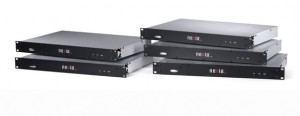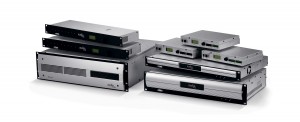As our family of audio products and solutions grows, we’ve found it useful to our customers to organize our products into two categorizes: Everyday and Enterprise.
Everyday audio is easy in and easy out. It’s audio that meets the simple, everyday needs of end users by providing professional audio at an affordable price. Enterprise audio means a diverse system comprised of multiple applications like conferencing, paging, background music, mix-minus, and court recording on one platform, with the capability to interoperate with other products and systems to create a single, cohesive, networked system.
In this blog post, we’re going to unpack Everyday audio, and give you some tangible examples of what it looks like with a Biamp solution.
Only What You Need, Nothing You Don’t
Every audio installation needs a certain basic DSP toolbox regardless of the system size or purpose. It used to be that if an installation required a little more or less than what was offered in the toolbox, the end user either compromised on what they wanted, or overpaid to get more gear. We believe in creating audio solutions that give end users everything they need, and nothing they don’t, without paying a premium.
We’ve also built our systems to be easily expandable with other Biamp equipment, and compatible with third-party equipment and controls. We work hard to make products that are easy to install, configure, and maintain, as well as easy to operate.
Our DSPs that fall into the Everyday category are Nexia, Audia, and TesiraFORTÉ (which also falls into the Enterprise category, but we’ll talk more about that in an upcoming post). All are excellent choices for small- to medium-sized solutions.
Two Examples of Everyday Audio Applications
The Situation:
Say your client needs a networked conferencing solution for two conference rooms that connect to Lync. They also want the rooms to be networked together.
The Solution:
You’ll need one TesiraFORTÉ AVB CI server for each room (plus one AVB switch). The TesiraFORTÉ AVB CI can directly connect with Lync (or other soft codec applications like Skype and WebEx) via its USB port, in addition to providing general high-quality audio for the room. Using AVB as its networking protocol, the TesiraFORTÉ AVB CI servers can seamlessly communicate with each other.
Since TesiraFORTÉ doesn’t ship until April 7th (less than two weeks!), this example is simply a possibility. Here’s an example of an existing Everyday audio installation:
The Situation:
The James B. Hunt Library at North Carolina State University (NCSU) needed an audio system that could accommodate a variety of audio spaces that had needs ranging from silence to surround sound, in addition to the typical requirements for a library servicing thousands of students and staff every day.
The Solution:
Designed by the Sextant Group and implemented by AVI-SPL, the audio system for the Hunt Library included comprehensive audio/visual, acoustic, and IT design components. Brought into the project at the perfect time, the Sextant Group was able to design an audio system that met all the needs of the NCSU campus with two DSP platforms: Biamp’s Audia and Nexia.
There’s a lot more to this installation than I’m able to cover in this post. Watch the video case study or download the full case study to get all the details.
The basic DSP toolbox is extremely important to any audio installation. Customizing it to fit perfectly within the end user’s environment and budget is where the magic happens. Now, I wouldn’t go so far as to say that we’re magicians necessarily, but we do know a trick or two about how to make audio sound amazing.
Stay tuned for my post on Enterprise audio.


